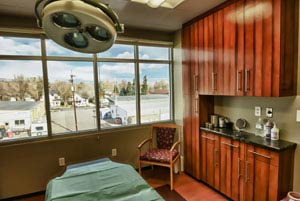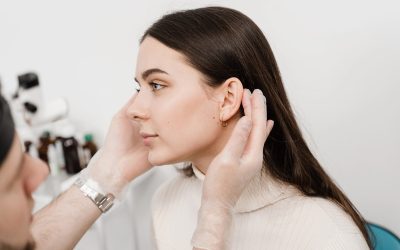Understanding Botox and Its Immediate Aftercare
Botox is one of the most popular non-invasive treatments for smoothing wrinkles and fine lines, providing patients with a more youthful appearance. However, the effectiveness of Botox isn’t just about the injection—it’s also about how well you care for your skin after the procedure. A common question that many people have is whether they can get a facial treatment after Botox and how soon they can resume their regular skincare regimen. While Botox is a quick and minimally disruptive procedure, the aftercare is critical for ensuring the best results. In this article, we’ll explore the relationship between Botox and facials, highlighting the timing and compatibility of these treatments to help patients optimize their post-Botox skincare routine and avoid any complications.
What Happens to Your Skin After Botox?
When you receive a Botox treatment, the injected solution temporarily relaxes the targeted facial muscles by blocking nerve signals that cause contractions. This process smooths wrinkles and fine lines, particularly around the eyes, forehead, and mouth. However, while Botox works beneath the skin, the surface experiences changes as well. Immediately after the injections, it’s common to experience minor side effects such as redness, swelling, or bruising at the injection sites. These are normal reactions as the skin responds to the needle punctures and the introduction of the Botox solution.
In the first 24 to 48 hours, the skin is more sensitive, and there’s a slight risk of bruising, particularly for individuals with thinner skin. The injections also take time to settle into the muscles, meaning excessive manipulation or pressure on the treated areas during this period can lead to Botox migration, where the product moves away from the intended site. This can affect the treatment’s effectiveness and result in unintended facial changes.
As the Botox begins to work over the following days, the skin gradually smooths out as muscle activity decreases. It’s crucial during this time to practice proper post-Botox skincare and avoid treatments or actions that could interfere with its effectiveness, such as facials, vigorous massaging, or applying heat to the treated areas.
When Can You Get a Facial After Botox?
After receiving Botox, it’s crucial to allow the injections time to settle before manipulating the skin with any facial treatment. Experts generally recommend waiting at least 7 to 14 days before having a facial. This time frame allows the Botox to fully integrate with the targeted muscles and minimizes the risk of disturbing the treatment site.
If you have a facial too soon after Botox, especially one involving deep pressure or manipulation, it can cause Botox migration, where the product moves away from the intended area, potentially affecting the results. For example, if Botox injected into the forehead is displaced by a facial massage, it could result in uneven muscle relaxation or unwanted drooping of the eyebrows.
In addition to avoiding facials, it’s essential to refrain from any other treatments that apply heat, pressure, or stimulation to the face, such as microdermabrasion, chemical peels, or laser treatments. These can increase circulation and interfere with Botox’s settling process. To ensure the best results, it’s always a good idea to consult with your injector about when it’s safe to resume facial treatments and which types are best suited for post-Botox care.
Types of Facial Treatments Compatible with Botox
Once the recommended waiting period after Botox has passed, certain facial treatments can complement your results without disrupting the effects of the injections. These treatments work to improve skin texture, hydration, and overall radiance while allowing the Botox to continue reducing wrinkles and fine lines.
Safe facial treatments to consider after Botox:
- HydraFacial: A gentle, non-invasive treatment that cleanses, exfoliates, and hydrates the skin without applying pressure to the injection areas.
- Light Chemical Peels: Mild chemical peels that focus on surface exfoliation can be done without affecting the deeper muscle relaxation from Botox.
- Microneedling (after 2+ weeks): Once Botox has fully settled, microneedling can help with collagen production and skin rejuvenation.
- LED Light Therapy: This treatment uses light to promote healing and stimulate collagen production without any physical manipulation of the skin.
- Dermaplaning: A non-invasive treatment that gently removes dead skin cells and peach fuzz, improving skin texture without impacting Botox-treated muscles.
These treatments enhance the appearance of your skin while working harmoniously with Botox to achieve a refreshed, youthful look. Always consult with your provider to ensure you’re choosing the best options for your skincare goals.
Botox and Long-Term Skincare: Creating a Balanced Routine
Maintaining youthful, healthy skin after Botox requires an ongoing commitment to a balanced skincare routine. Botox can reduce dynamic wrinkles, but for comprehensive skin rejuvenation, a long-term regimen that focuses on hydration, exfoliation, and collagen stimulation is essential. By combining Botox with carefully selected skincare treatments, you can enhance and prolong the results.
Key elements for a balanced post-Botox skincare routine:
- Hydration: Incorporate hyaluronic acid serums and moisturizers to keep the skin plump and hydrated, which complements Botox’s wrinkle-smoothing effects.
- Sunscreen: Daily use of a broad-spectrum sunscreen is crucial to protect skin from UV damage and prevent new wrinkles from forming.
- Exfoliation: Regular but gentle exfoliation helps remove dead skin cells, revealing smoother skin and allowing skincare products to penetrate more effectively.
- Retinoids (used cautiously): Retinoids boost cell turnover and collagen production but should be introduced gradually, especially if used in combination with other treatments.
- Collagen-boosting treatments: Procedures like microneedling or RF treatments, spaced out appropriately, can stimulate collagen production for firmer skin over time.
By integrating Botox into a broader skincare routine, you can achieve long-lasting and visible improvements to both the skin’s appearance and texture. Consult with skincare professionals to tailor a routine that suits your specific skin type and goals.
Conclusion: Optimizing Your Results with Botox and Facials
Combining Botox with carefully timed facial treatments can significantly enhance your overall skincare results. While Botox targets wrinkles and fine lines by relaxing facial muscles, incorporating the right facials can improve skin texture, hydration, and radiance. Timing is essential—waiting the recommended 7 to 14 days after Botox before having any facial treatments ensures that the injections have fully settled into the muscles, maximizing the benefits of both the Botox and the facial.
For long-term results, pairing Botox with a thoughtful skincare routine that includes gentle facials, sunscreen, hydration, and collagen-stimulating treatments like microneedling can keep your skin looking fresh and youthful. Each patient’s skin is unique, so working with skincare professionals to customize a post-Botox plan will ensure the best results.
At Boulder Valley Plastic Surgery, we’re committed to helping you achieve your aesthetic goals with personalized care. To learn more about optimizing your skincare routine and Botox treatments, visit us or call (303) 449-6666 to schedule a consultation.





